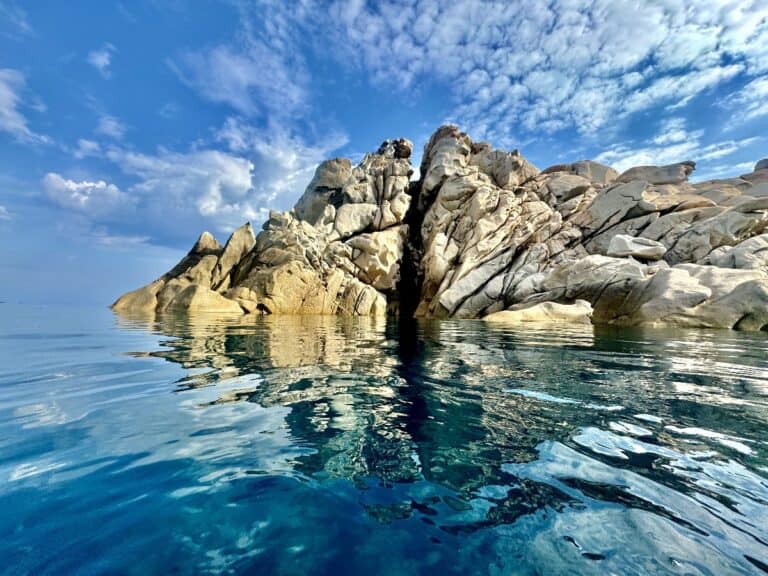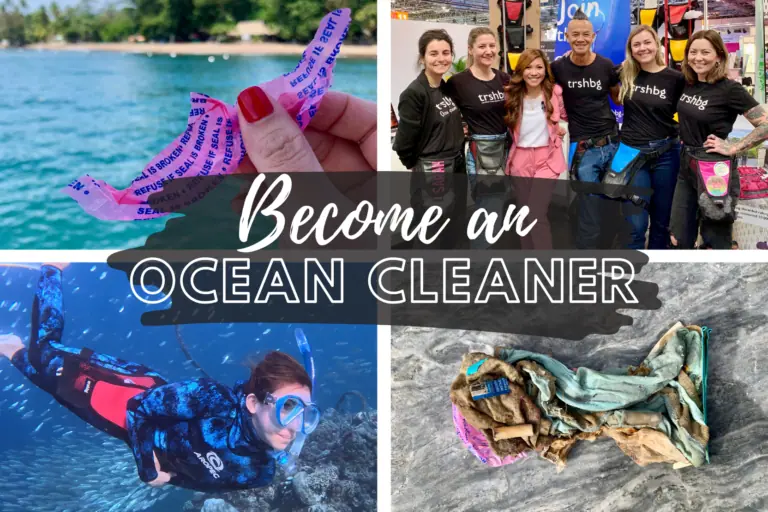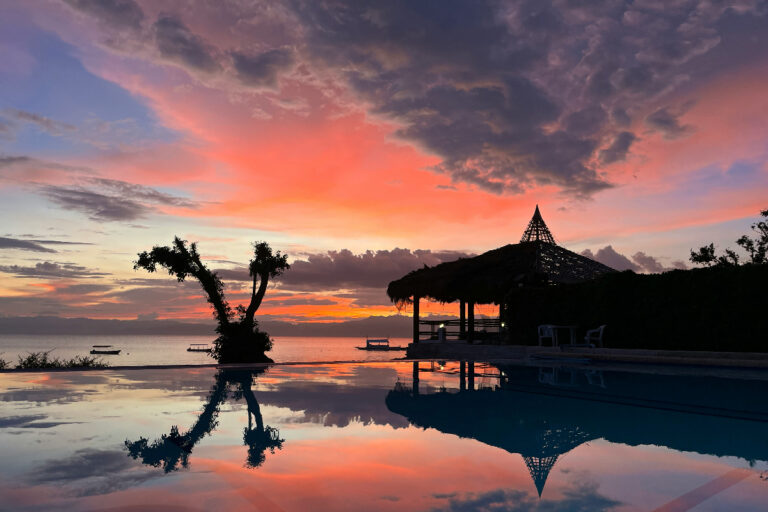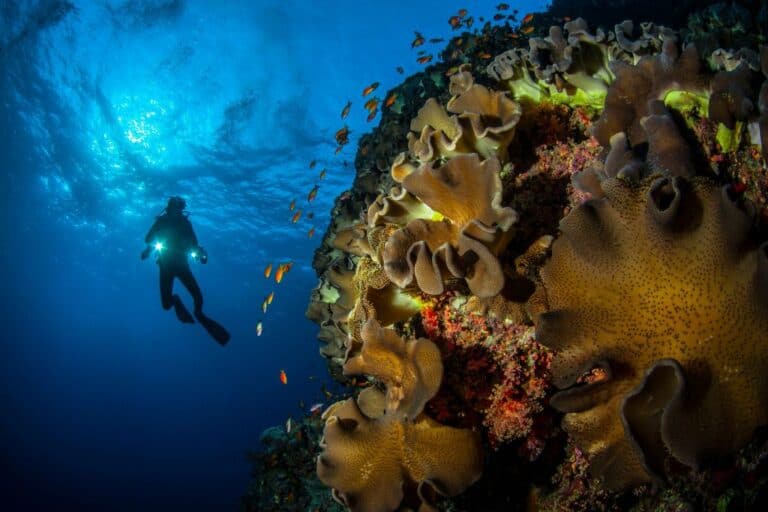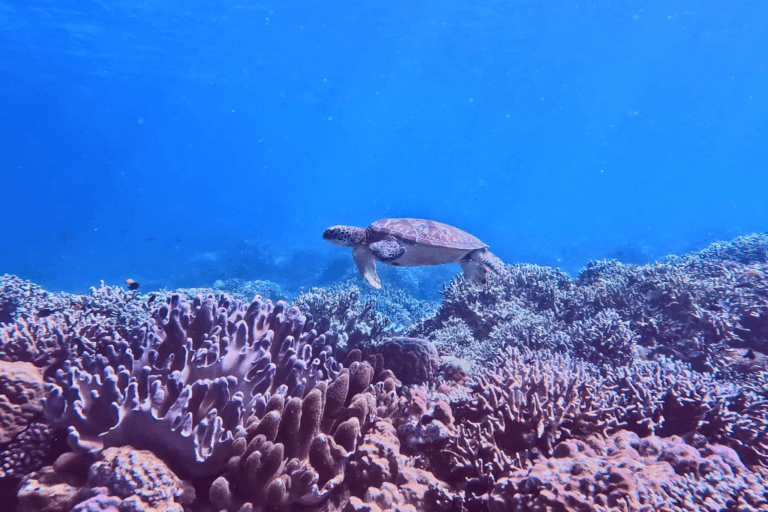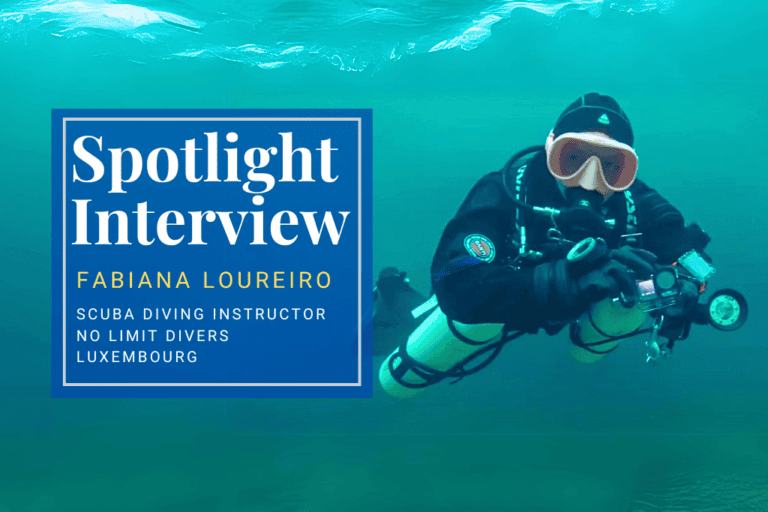Leading the Blue Revolution: Insights from Ocean Advocate Helene-Julie Zofia Paamand
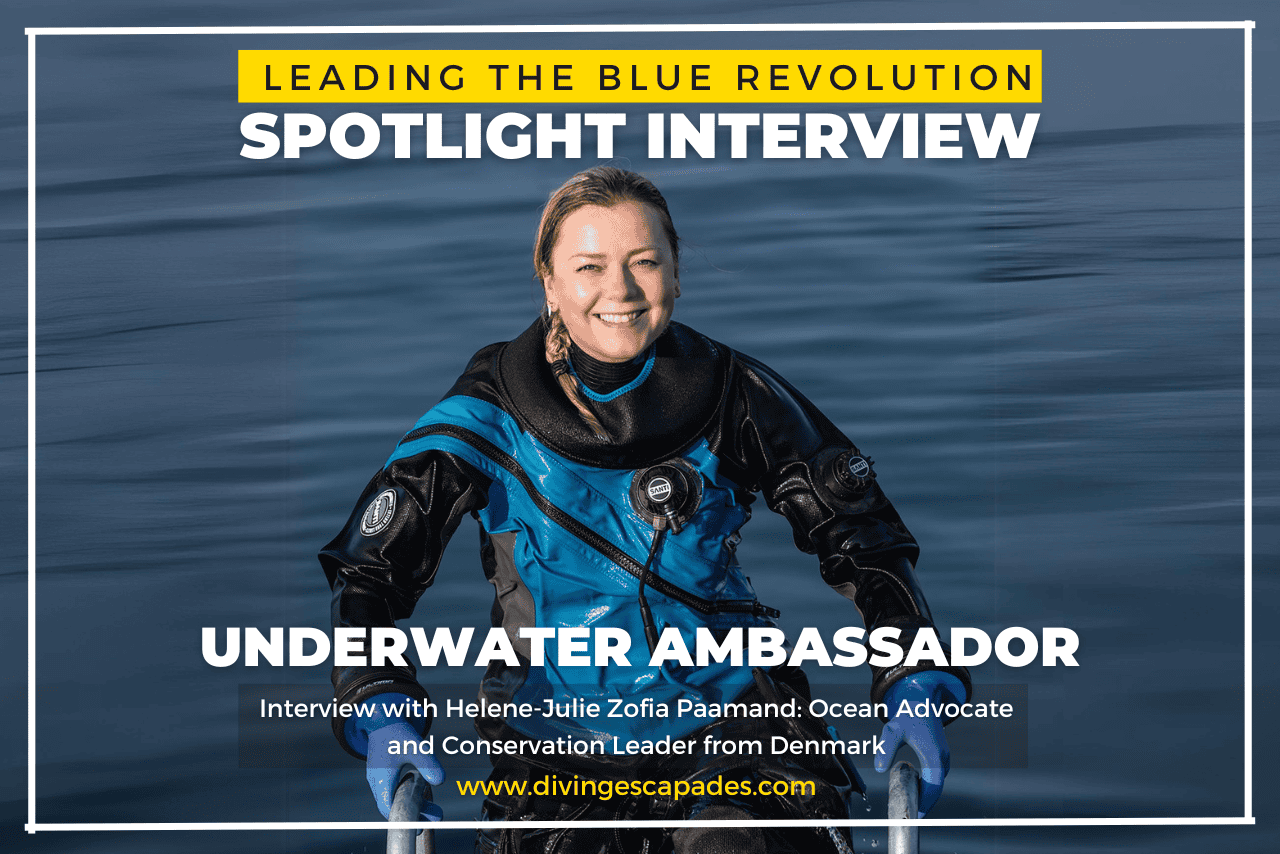
Connecting from Luxembourg to Denmark just days before World Oceans Day 2024, I had the pleasure of interviewing Helene-Julie Zofia Paamand via a video call. Our paths first crossed at Boot 2024 in Düsseldorf, Germany where her passionate advocacy for ocean conservation left a lasting impression on me.
Known on Instagram as the “Underwater Ambassador,” Helene’s inspiring work as an underwater photographer, professional diving instructor and marine advocate has continued to resonate with me ever since. I knew she would be the perfect subject for an in-depth interview on ocean conservation.
What unfolded during our discussion was far more enriching than I had anticipated. Helene’s insights into the challenges and rewards of her journey, her innovative approaches to raising awareness, and her deep connection to the ocean were both enlightening and motivating. Join me as we delve into Helene’s story, exploring how her love for diving evolved into a powerful mission to protect our oceans and inspire others to take action.
Lorie: Good morning Helene. Welcome to the Spotlight Iterview Session on Diving Escapades. Thank you for joining me today. To start, can you share a bit about your background and what inspired you to become an ocean advocate?
Helene: I started diving before I even considered advocacy. I began diving in 2007 and became a divemaster in 2008 while working at a dive center in Egypt. Being constantly surrounded by divers was inspiring. Later on, I also became a diving instructor. This was exciting because I felt that by becoming an instructor, I could introduce even more people to the wonders of the underwater world. Diving reveals a whole new world. Nowadays, people have an idea of what to expect because of the many pictures and videos on social media, but back then, there was only Facebook, and underwater photography wasn’t widespread. For me, it was an entirely new world, and I had no idea of the wonders I would get to see.
“People need to understand that we still have untouched parts of nature here on Earth that we must protect.”
As a diving instructor, I was thrilled to share this beauty with many people. Over time, I realized that the underwater world contains some of the most pristine and original natural environments on our planet. My understanding of nature, influenced largely by human cultivation on land, was transformed by these experiences. I began to think that this beauty shouldn’t be shared only with potential divers; it needed to reach a broader audience. People need to understand that we still have untouched parts of nature here on Earth that we must protect.
Simultaneously, photography technology improved, and I started using compact cameras. I realized that through photography, I could take people underwater with me, allowing them to see the incredible sights I saw. This realization was key in shaping my commitment to ocean advocacy.
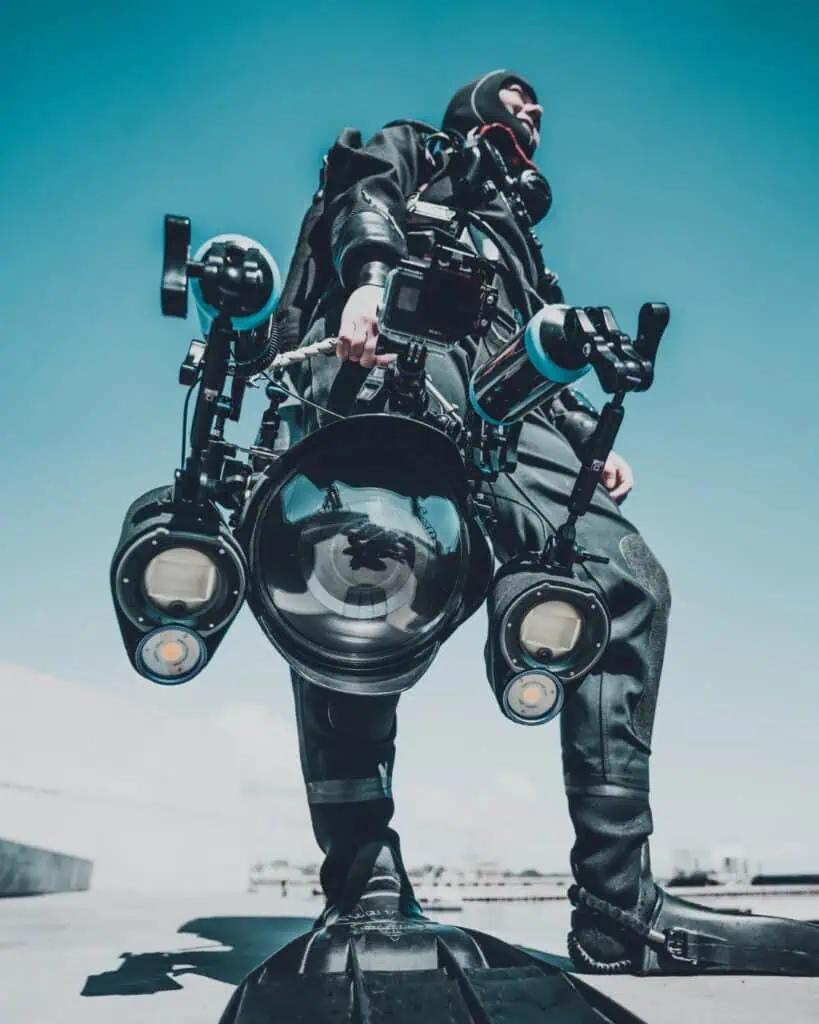
Helene-Julie Zofia Paamand in her full diving gear, equipped with her specialized underwater camera setup used to capture the vivid underwater scenes. Photo credit: Nicky Hendrich
Lorie: It’s fascinating to hear how diving opened up a whole new world for you and sparked your desire to share it with others. Reflecting on your journey, was there a pivotal moment or realization that specifically directed you towards ocean conservation and advocacy
Helene: It was more of a process rather than a single day when everything just came together. It was about understanding that “wow, here we have something original that hasn’t been cultivated by humans yet.” Initially, I took photographs simply to document what I saw. I focused on capturing beautiful pictures of animals, but then I started to take photos of things that weren’t so pretty. I realized that I shouldn’t just be taking beautiful photos—I needed to document everything. Otherwise, we wouldn’t understand how we are already intruding upon and altering the originality of the underwater world.
Lorie: It sounds like you wanted to present a more balanced view of the underwater world, not just the beauty but also the challenges and impacts of human activities. Is that an accurate reflection of your approach?




Helene-Julie Zofia Paamand’s underwater photography showcases a striking contrast between the natural beauty of marine ecosystems and the harsh effects of human activities, illustrating both the allure and the challenges faced by our oceans. Photo credit: Helene-Julie Zofia Paamand
Helene: Yes, definitely. In 2017, I decided to make myself an “Underwater Ambassador” and developed a plan to focus on this type of documentation. This was ten years after I started diving, so I’d say it was a process. However, deciding to name myself and fully commit to being an Underwater Ambassador might be the closest thing to a pivotal moment.
Lorie: It’s really inspiring to hear all this from you. As divers, we are privileged to see the beauty underwater, but taking that hobby to the next level to show everyone what it’s like underwater and how we impact it is truly amazing. This leads me to ask: could you describe some of the projects you’re currently working on related to ocean conservation?
Helene: Thank you for your kind words. Taking my love for diving beyond a hobby and using it to advocate for ocean conservation has been a fulfilling journey. Currently, my most effective tool in this advocacy is the camera. I use it to assist other organizations by documenting and creating content for their projects.
Recently, I furthered my education and became a scientific diver. With this qualification, I offer advice on conducting these projects, leveraging my extensive diving experience. Additionally, I participate in numerous cleanup events, mainly here in Denmark during the summer, allowing divers to join. We invite volunteers to help clean up in Danish marinas. Denmark has approximately 300 marinas, and they are hotspots for trash because people often eat, drink, and spend time there, leading to considerable amounts of waste. So, we organize these cleanup events to address this issue.
I’m also involved in the Eelgrass Restoration project. Eelgrass has experienced a massive decline in Denmark due to eutrophication caused by wastewater containing nitrates primarily from fertilizers used in agriculture . Our project involves transplanting eelgrass to help it expand and recreate lost habitats.


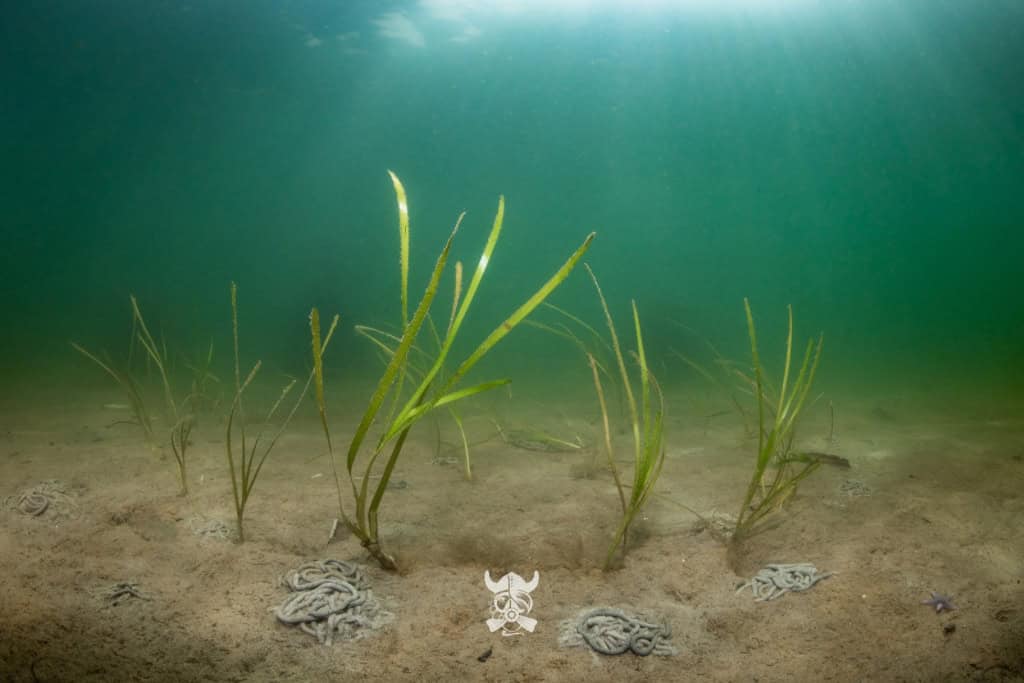
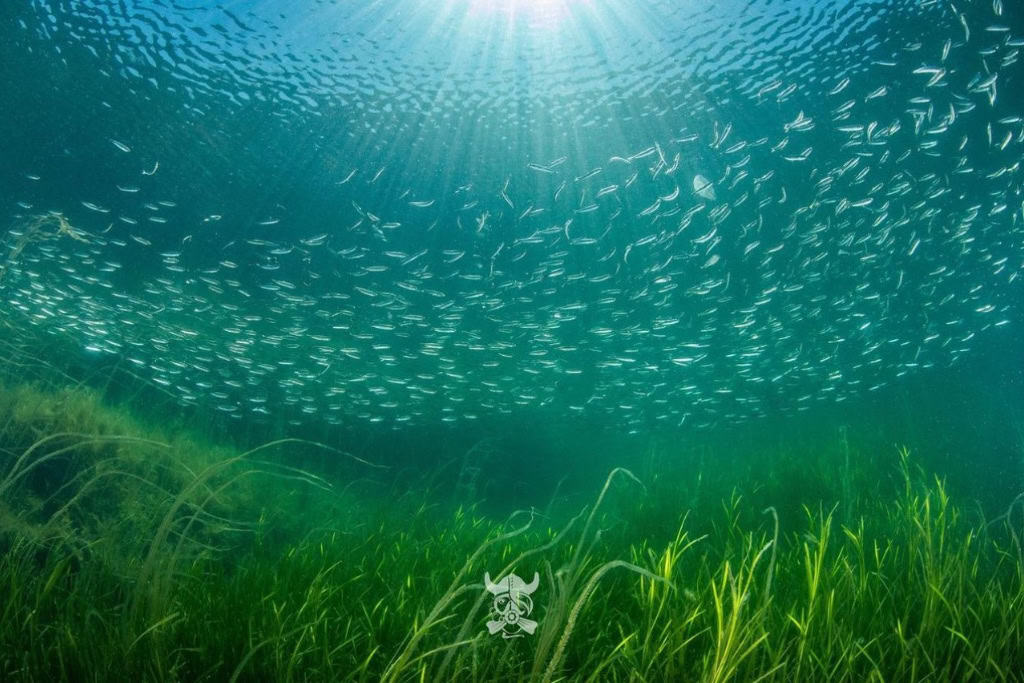
Photos depicting Helene-Julie Zofia Paamand’s involvement in the Eelgrass Restoration project. In response to the significant decline of eelgrass in Denmark caused by eutrophication, the project focuses on transplanting eelgrass to promote its expansion and restore lost habitats. These images highlight the meticulous efforts to replant eelgrass, aiming to revitalize critical marine ecosystems. Photo credit: Helene-Julie Zofia Paamand
Additionally, I recently joined a ghost net registration program. This program started on a small scale and has now expanded nationwide. It enables divers to register ghost nets and educates them on when and how to retrieve them, as removing ghost nets can be quite dangerous.
Lorie: Could you explain what a ghost net is in more detail? While I have a general understanding, I would appreciate your expert explanation on how these nets affect marine environments and wildlife.
Helene: Sure. A ghost net is any abandoned or lost fishing net that continues to catch marine life unintentionally. Nets can be lost due to accidents, bad weather, or sometimes discarded intentionally because they’re no longer valuable or could pose a danger to the boat. Ghost nets can also be used illegally during months when fishing certain species is prohibited. These nets, whether lost or abandoned, continue to catch and entangle marine life, which is a significant problem. Even though plastic pollution from human consumption is a growing problem in the ocean, ghost nets are still considered the main source of plastic pollution. Their impact is enormous.

Helene-Julie Zofia Paamand retrieves a ghost net from the waters of Sweden. Photo credit: Bjorn Alvarson.
Becoming a scientific diver last year, led me to collaborate with politicians here in Denmark. We are working on a project to put emphasis on the environmental impact assessments that are made prior to construction close to or in water. These assessments sometimes use questionable methods to achieve specific outcomes, so we’re exploring how to conduct them more effectively using new technologies. This involves some criticism, but it’s crucial to challenge existing practices and consider more effective alternatives.
Lastly, I give presentations at schools and organizations, both for children and adults. I use my photographs to raise ocean awareness and provide practical ideas on how people can make a difference for the ocean in their daily lives, even if they aren’t divers or involved in marine projects.

Engaging with students during a school presentation, using her striking underwater photography to educate and inspire young minds about ocean conservation and practical ways to protect marine life. Photo credit: Hilma Toivonen.
Lorie: That’s a very practical approach, especially since not everyone can dive due to medical reasons or personal preferences. Your answers have covered my follow-up questions about how you use your photography to raise awareness and involve everyone in conservation efforts, regardless of their ability to dive. Moving on, could you share some of the biggest challenges you’ve encountered in your advocacy work?
Helene: One challenge I’ve faced, which I believe many can relate to, is the overwhelming noise on various media platforms. It’s very difficult to find a space where important messages about environmental issues can be heard amid so much competing content. Sometimes, it feels like I’m trying to highlight critical environmental concerns while competing with more popular, yet less impactful topics. This can be quite frustrating.
But that’s the nature of the game. I always try to evoke an emotional response because I believe we all have an intuitive understanding of how important nature is. It’s very challenging, though. I’m not alone in this; luckily, many voices are advocating for the environment. It’s important to lift each other up. If someone has a better reach, we should support that message to build on the existing foundation. Finding a way through the media jungle is incredibly tough.
I often explain that the surface of the ocean is a stronger boundary in our understanding of the world than space. Breaking that surface and getting attention down there is very tough. The surface always looks pretty, and people may spend years looking at it and thinking it’s beautiful without understanding the vast ecosystems beneath. Not everyone has the privilege of seeing the ocean up close.
I wish my photos could speak for themselves, but they often need explanations to convey their importance. Unlike art, where interpretation is fine, environmental photography needs factual support to explain why an image matters.
Lorie: Absolutely, breaking through the noise can be challenging, especially with so many popular topics that often overshadow important issues like ocean conservation. Given the unpredictability of what goes viral, besides social media, what other channels do you use to communicate your advocacy?
Helene: I also have a gallery where people can visit and see my images. I give tours there and showcase what I call my “usual suspects.”
Lorie: Could you give us an example of what you mean by “usual suspects”?
Helene: Sure. One example is the inner lining of a to-go coffee cup. Many people think it’s just a paper cup, but it has a plastic lining. When these cups end up in the water, the paper dissolves, leaving the plastic behind. Other examples include balloon remnants, plastic wrappers from snacks, and plastic bottles. In Denmark, we also find a lot of cans. Despite having a return system, wind or animals often disperse these items from bins into the ocean. These usual suspects are things we can eliminate from our daily lives by changing our habits.

Helene-Julie Zofia Paamand in her gallery in Denmark, where visitors can explore her compelling underwater photography. This gallery is a vital part of her advocacy work, showcasing the beauty of marine life and raising awareness about ocean conservation. Photo credit: Nicky Hendrich.
Lorie: I completely agree. It’s wonderful that you complement your online presence with a physical gallery, allowing people to experience your work firsthand. This approach really broadens your reach. With that in mind, could you share a success story or a significant achievement in your advocacy work that has positively affected the ocean environment? It doesn’t have to be something huge, just something impactful.
Helene: That’s a tough question because it’s challenging to pinpoint just one achievement. I often feel hesitant to put myself on a pedestal. However, I’ve come to realize that I’ve frequently been ahead of my audience in suggesting changes or addressing issues that weren’t widely discussed yet. For instance, in the organizations I support, I’ve advocated for simple changes like asking people to bring their own bottles to events instead of providing single-use plastic bottles.
I know friends and colleagues often think of me when they shop or see trash on the ground. They hear my voice in the back of their minds reminding them to pick it up, and they do. It’s like being a little voice of conscience, which I actually don’t mind.
I believe my role isn’t just about the photos or the gallery—it’s also about leading by example and being a few steps ahead in advocating for change. Hopefully, this inspires more people to see that making a difference isn’t that difficult.
Lorie: In my view, that’s a significant achievement—being able to inspire others is invaluable, even if it isn’t easily measurable. For example, your Instagram post on Valentine’s Day about avoiding balloons in favor of more sustainable ways to show love really resonated with me. It made me rethink the environmental impact of balloons. Posts like that can shift perspectives and are incredibly inspiring.
Helene: Thank you. I appreciate that. I remember your comment on that post, which meant a lot to me. Often, people don’t like being reminded of the environmental impact of their actions. It’s difficult to put out messages about behavior changes without coming off as negative because it can make people uncomfortable. I recently read a study in Denmark showing that 1 out of 5 people avoid negative messages because they find them depressing.
“We need to move away from single-use items, regardless of the material.”
I notice that posts showing me in my diving gear get a lot of positive feedback, while posts about environmental issues, like the balloon post, don’t get as much attention. Yet, those posts reflect my true passion.
Lorie: I found real substance in that post, which is why I felt compelled to engage with and share it. It delivered a meaningful message that I believe others needed to see.
Helene: Exactly. We need to move away from single-use items, regardless of the material. Even recycling involves a polluting process. For example, I made my business card a reusable bamboo straw. Although the debate over paper versus plastic straws has settled, people are still annoyed about using paper straws. Why not avoid straws altogether?
Another issue I’m focused on is the disposable to-go cup.
Lorie: That’s a very relevant point. With your earlier explanation, I’ve come to realize that these disposable “paper” cups are lined with plastic, which complicates recycling and contributes to environmental waste. They appear to be made of paper and thus fully recyclable, but the plastic lining makes this process more challenging. Could you explain a bit more about the challenges these cups pose and how they impact our efforts towards sustainability?
Helene: Yes, here in the EU, coffee cups have a plastic lining inside the paper. This means they aren’t fully recyclable. You can burn them, but that’s another complex issue. In urban areas, airports, and recreational spaces, people use these cups frequently, often more than once a day. There’s absolutely no need for them. It’s high time for reusable cups to become the norm.

During our interview session, Helene-Julie Zofia Paamand holds up a disintegrated disposable “paper” cup collected during a cleanup dive, illustrating the anatomy of such cups. This reveals the inner polyethylene plastic lining and outer paper layer, highlighting the complexity of recycling and the environmental impact of these commonly used items.
Lorie: Thank you for showing me that. It’s surprising and makes you think about how to properly recycle these items since they’re composed of both paper and plastic.
Helene: Exactly. They can’t be recycled properly and often end up being incinerated. This adds another layer to the discussion about waste management.
Lorie: It’s concerning to realize how everyday items like disposable “paper” cups contribute to broader environmental challenges. Addressing these issues seems to require more than individual actions—it calls for systemic change. With that in mind, what changes in policy and global cooperation would you like to see to better protect our oceans?
Helene: Yes, we haven’t discussed the fishing industry much, but it’s crucial. The fishing industry can harvest natural resources for free, which is astonishing. If this practice was proposed today, we wouldn’t allow it due to its potential to disrupt ecosystems. Stronger regulations on trawling are essential, particularly banning bottom trawling, which is very invasive.
For example, Greece recently banned bottom trawling in protected areas, highlighting the need for genuine protection. We should also price seafood appropriately to reflect its true environmental cost, ensuring that local communities reliant on fishing aren’t disadvantaged.
Beyond fishing, we must reduce single-use items and rethink our fashion industry, which contributes to ocean pollution. Reusing and recycling are vital, but future technologies should aim for more sustainable processes.
Lastly, we need to eat less meat. In Denmark, 60% of land is agricultural, with 80% of that used to feed livestock. This contributes to nitrate pollution in our oceans. Reducing meat consumption would not only lower this pollution but also allow for the restoration of more natural areas.
Lorie: Your points about sustainable practices in agriculture and industry are incredibly insightful and underline the broader need for systemic changes to protect our oceans. In line with these ideas, could you share more about the tools and initiatives that support your conservation efforts?
Helene: One initiative I’m particularly inspired by is the TRSHBG, a bag designed to enable everyone involved in water sports to collect trash. You’ve already mentioned it in your previous features, and it truly stands out for several reasons.
Not only is the product itself amazing in its utility, but working closely with the company has shown me their unwavering commitment to genuine sustainability. They refuse to take shortcuts to expand quickly, ensuring their operations remain aligned with their environmental principles. Unfortunately, it’s common to see green ideas evolve into greenwashed business ventures, but TRSHBG is a refreshing exception, maintaining its integrity and focus on true environmental impact.
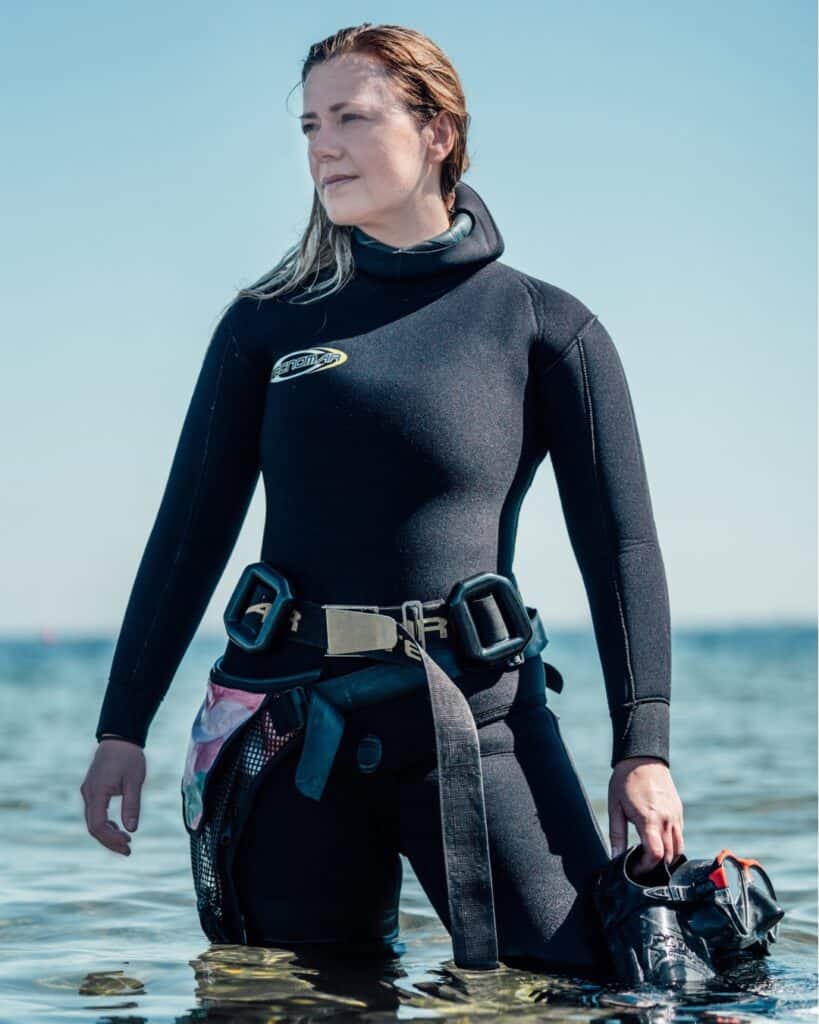
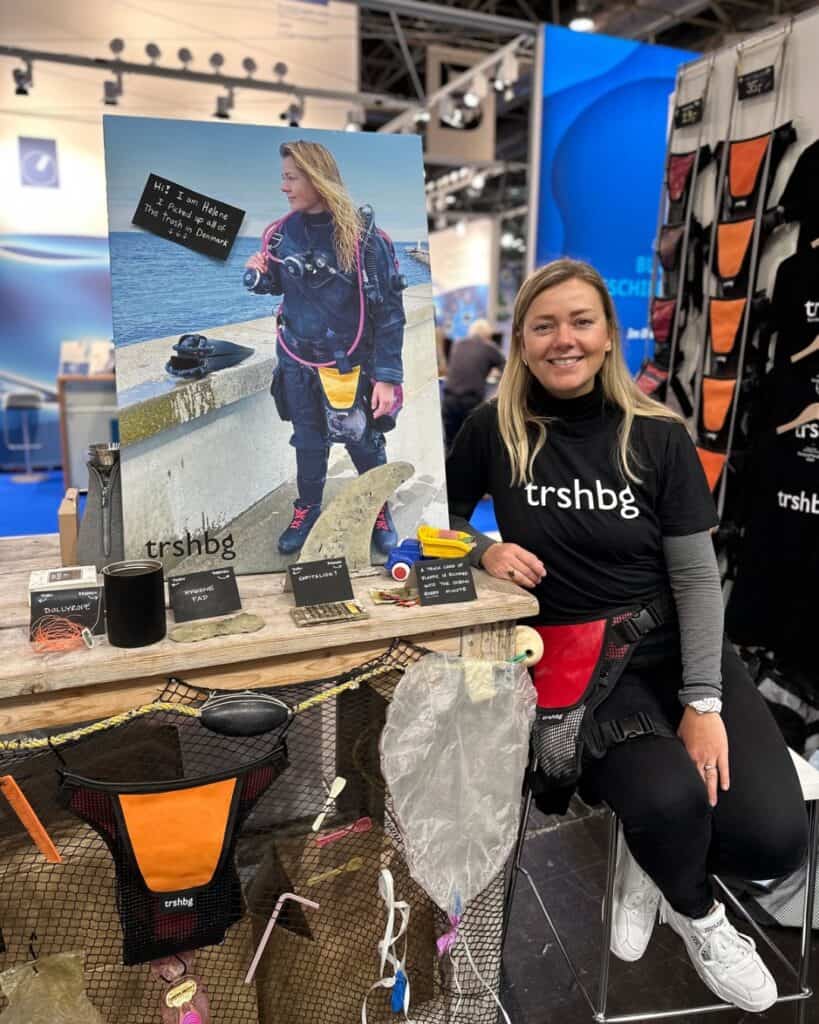
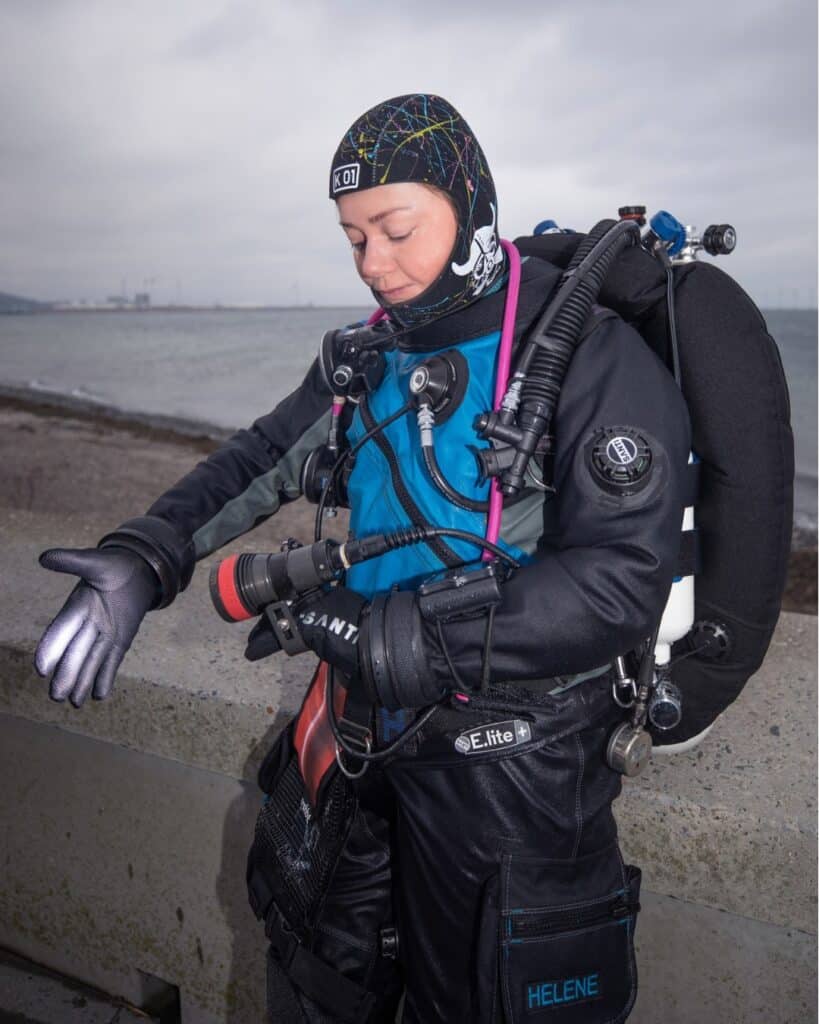
Helene-Julie Zofia Paamand, in her diving gear and equipped with a TRSHBG, demonstrates how divers can turn their passion into ocean conservation advocacy. She highlights that every dive should have a purpose, promoting mindful and respectful interactions with marine life. Photo credits: Sarah Gauthier and Nicky Hendrich.
Lorie: TRSHBG certainly exemplifies how innovative solutions can align with true sustainability goals. With such inspiring initiatives already making a difference, let’s look ahead to the future. What are your hopes for the future of the oceans, and what are the next big steps for your advocacy work?
Helene: My hope is that we can leave larger parts of the ocean undisturbed. The ocean thrived before human interference, and I believe it can recover if given the chance. However, addressing ocean health means tackling issues like acidification caused by increased carbon dioxide levels. Whether this involves adopting past practices or integrating new technologies, I can’t say for sure. My main hope is that the ocean gets a break. When I dive, I see fish, and it reminds me that marine life is actively contributing to ocean health. They are the true advocates, playing their part in sustaining the ecosystem. I hope we can find our role and support them.
Lorie: That makes perfect sense. What about the role of recreational divers? What can they do?
Helene: Divers can play a significant role in ocean conservation. Like many, I started diving for the joy of it, but it evolved into advocacy. Every dive should serve a purpose beyond enjoyment. Divers can contribute by documenting their experiences and raising awareness. It’s about transforming a passion into a tool for conservation. This shift in mindset is becoming more common among divers today, and we are on the right path. I encourage divers to be mindful and respectful of marine life, avoiding activities like chasing animals. This respect has grown since the days of early diving films, and today’s divers are much more conscious of their impact on the underwater world.
“Every dive should serve a purpose beyond enjoyment. Divers can contribute by documenting their experiences and raising awareness. It’s about transforming a passion into a tool for conservation.”
Lorie: Before we wrap up, let’s talk about advice. What would you suggest to someone looking to get involved in ocean conservation?
Helene: For divers, it’s straightforward—start by influencing those around you. Talk about ocean conservation with your family and friends. Don’t shy away from pointing out issues, even the unpleasant ones. If you’re not a diver, find a way to integrate your passion into conservation. Whether it’s painting, writing, or sewing, use your skills to support NGOs or create awareness. For example, sell your artwork and donate the proceeds to ocean conservation groups, or offer your writing skills to organizations for their blogs and social media. The key is to turn your passion into a tool for supporting ocean conservation.
“If you’re not a diver, find a way to integrate your passion into conservation”
Lorie: That’s excellent advice. As we move to final thoughts, is there anything else you’d like to share about the importance of protecting our oceans?
Helene: Yes, the ocean is our main life-supporting system. Its ecosystems produce much of the oxygen we breathe and are crucial to our survival. You don’t need to read extensive scientific papers to understand this—just look at the impact we’ve had on nature. The ocean is the last original natural habitat we have left. Our lives depend on it, not the other way around. If we disappear, life in some form will continue as long as there’s water and sunlight. But we need the ocean to sustain human life. That’s the core message I want everyone to understand: we need the ocean, the ocean doesn’t need us. Our future depends on a healthy ocean. By working together to protect it, we can ensure a thriving future for both the ocean and ourselves.

Photo credit: Sarah Gauthier.
Wrap-Up:
Thank you for joining me for this insightful conversation with Helene-Julie Zofia Paamand. Helene’s commitment to ocean advocacy through her work in underwater photography, education, and hands-on conservation efforts is truly inspiring.
I hope her experiences and insights have prompted you to reflect on the critical role our oceans play in sustaining life and how each of us can contribute to their preservation. Whether it’s through small changes in our daily habits or active participation in conservation initiatives, everyone has a part to play.
Follow Helene on Instagram at @underwaterambassador to stay updated on her latest projects and support her initiatives. Helene also offers limited prints of her best underwater photographs, with a transparent business model where one-third of each sale is donated to organizations dedicated to ocean awareness and restoration. To learn more or purchase prints, please visit https://underwaterambassador.com
Thank you for reading to the end, I hope this interview has inspired you to think more deeply about ocean conservation. Stay tuned to Diving Escapades for more inspiring stories, and let’s continue to work together to lead the blue revolution.

